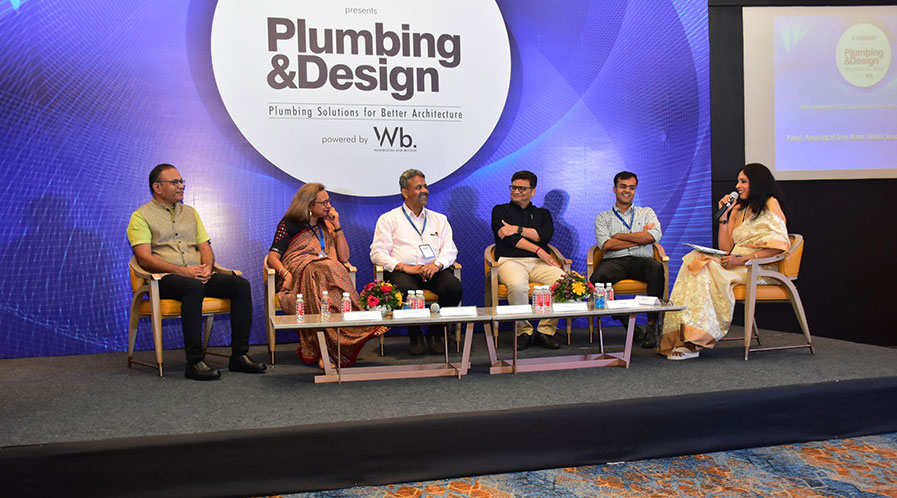Recycling of Grey Water: Whose Responsibility Is It?
Panellists comprising MEP consultants, architects and developers discussed the process and various aspects related to greywater recycling and how it can be systemised.
Talking about the approach, Amit Mehta, Director – MEPF Engineering, INI Infrastructure and Engineering Pvt Ltd shared, “Greywater recycling is no longer an option but is more of a compliance that we need to follow. Our approach is to start with net zero building planning. The idea is to design a system that can be water efficient. The need for water also depends on the kind of project which can differ from residential to commercial. The question here is, why would I spend on portable or bore water when I can spend on treated grey water?”
Hemal Shah, Principal Architect, Hemal Shah and Associates agreed, “We also work on a similar concept to the net zero energy buildings. Whether it is a residential building, commercial, institutional, educational, or hospitality, we always try and convince our clients to use grey water in all these buildings. We show them statistics in terms of the economy and other advantages to achieve this, which in turn saves the client’s money. One of the lines I always tell my clients is, ‘If you want green, go grey’. Why do we not have policies for greywater? This would be something that I would like to see in the coming days.”

Highlighting the challenges of adopting greywater recycling, Nilay Patel, Partner/Director, Deep Group added, “For an architect, for a particular project, the client is usually a single person. But as a developer, our client for a particular project may be around 500 people. That makes it extremely difficult for us to convince all of them. Although we are all in for water conservation, we also have to take care of the sentiments of the people living in the apartments. We provide sewer treatment plants, provide connections of these plants with separate overhead tanks, but we also provide a connection of the domestic water index in the same tank. This is done because people are not really convinced with the concept of reusing recycled greywater.”
He further added that the amount of greywater treatment to be provided in a building can vary depending on the size of the campus. “People living in a smaller sized campus with just one building, will not be able to maintain huge amounts of greywater treatment plants.”
“A lot of buildings these days have vertical gardens and ground-level gardens, substantial amounts of greywater can be used for such landscapes if it is treated properly. We can definitely save 40% of the daily requirement of water.”
The solution, according to Apurva Shah, Principal Consultant, Avani Enterprise, lies in communicating the benefits with the stakeholders, “Greywater does not contain any microbes and has not created any epidemic in the history of mankind. If we connect water with the soil, it will automatically replenish, regenerate, and UV-sterilize, and it automatically becomes clean when it reaches the wetlands. We need to learn and understand nature-inspired science and nature-derived technology. A lot of buildings these days have vertical gardens and ground-level gardens, substantial amounts of greywater can be used for such landscapes if it is treated properly. We can definitely save 40% of the daily requirement of water.”
Chirashree Thakkar, Principal Architect, Thakkar Associates, Architects and Engineers added, “Architects played an important role in changing the minds of people regarding greywater. It is all about three things, the mindset, available technology, and precedence. Available technology comes into light here because the whole concept is about the purification of greywater. In private residential projects, right from day one, I have been using greywater. We need to cultivate this mindset and educate the clients in order to convince them about the concept of greywater.”
On how to circumvent the user’s mindset Mehta opined, “We try to use greywater as the last option for the use of washrooms and flushing because there are factors like sentiment, culture, and mindset that come into play. We try to use greywater as a priority in landscaping and water-cooling systems.”
[Edited Excerpts from a Panel Discussion on ‘Recycling of Greywater: Whose responsibility is it?’ held at Courtyard by Marriott, Ahmedabad as part of Geberit presents ‘Plumbing & Design’ powered by Washrooms and Beyond.]
Tags: Geberit India, Greywater Recycling, Panel Discussion, Plumbing, Plumbing & Design



